Are you a bit of a hippie in your garden? Relaxed and laid-back, rarely cutting the lawn or hedges while trying to grow a few organic vegetables? It might be that you are not a gardening throwback to the '60s but are a follower of the Slow Gardening movement.
Inspired by the Slow Food movement, founded by Carlo Petrini in the 1980s, Slow Gardening was started by American horticulturalist Felder Rushing. At its deepest level, Slow Gardening is about more than practical gardening; it's about self-awareness, personal responsibility and environmental awareness. It has been described as an attitude rather than a how-to checklist.
Slow Gardening is what I would think most gardeners aim for: a relaxing pastime, one that lets them take their time and work with the seasons and with the local environment. Lets check out some of Slow Gardening's main principles — propagating some of your own plants, using plants suited to your garden's microclimate, conserving water, composting as well as using design details such as growing hedges and leaving grassy areas natural to encourage wildlife — to help us achieve its ideals in our own gardens.
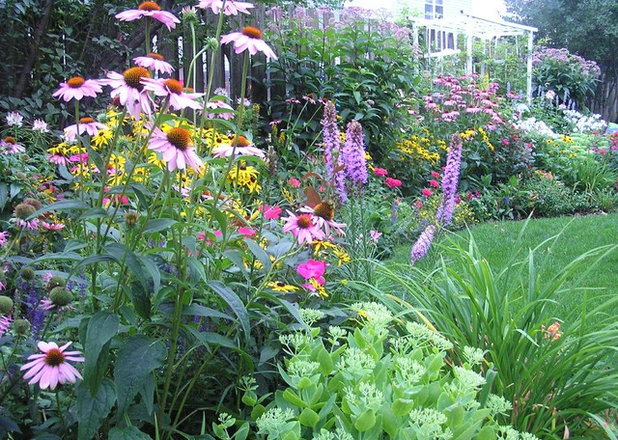
In & Out Design
1. The pleasure is in the process. Once we have the image of the garden we want in our mind, we can become impatient to turn it into reality. With enough money it can be easy to achieve this reality by using large specimen plants, but this is not the Slow Gardening way.
The pleasure of slow gardening is enjoying the process as much as the result. Perennials and ornamental grasses are easy to grow from seed or cuttings — though it will take longer to create your dream garden. By growing your own plants, you will not only get to understand their needs, but you'll have real ownership of them.
Shrubs are not always so easy to grow from seed, but you can always buy small starter plants that, over time, will achieve the size you want. The real pleasure of slow gardening is in waiting and appreciating the different stages of plant growth.
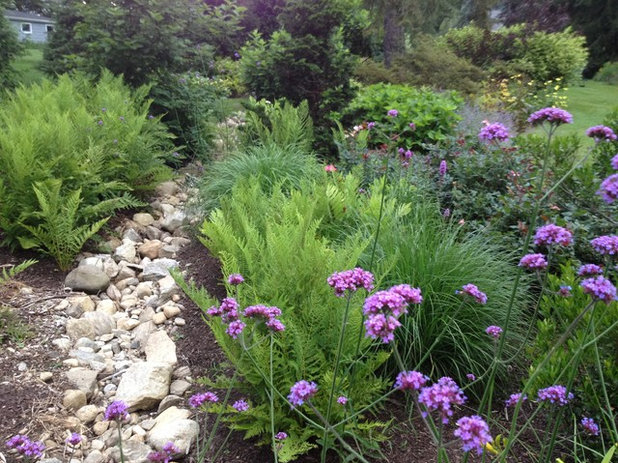 2. Choose plants that will thrive in your garden.
2. Choose plants that will thrive in your garden. When designing your garden on the principles of Slow Gardening, what we plant and where is of prime importance.
By growing plants that are suited to your garden's microclimate, less work, feeding and watering will be required to get the best results from those plants. Plants naturally grow well when they are planted in the same situation as their natural habitat.
Regional garden guides on Houzz
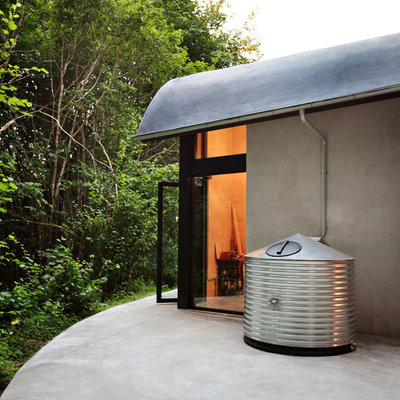
Calico Studio
3. Water conservation can be stylish. With the changing world climate, water conservation has become vital, especially in the way we garden. A thrifty approach to using water is a kingpin of the Slow Gardener's doctrine.
Water butts and rainwater storage tanks should be an integral feature in any Slow Gardener's garden, collecting rain to use throughout the growing season. Today we don't have to rely on unsightly green plastic barrels as our only collection method; there are plenty of stylish and interesting containers that can become a feature of a garden's overall design.
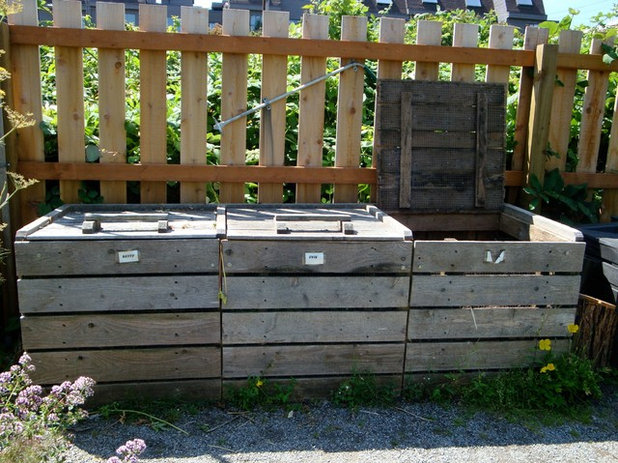
Matt Kilburn
4. Invest in DIY soil improvement. Another way of helping to conserve water is making sure your soil retains moisture. The best way to achieve this is through the addition of organic matter such as farmyard manure, leaf mold or the Slow Gardener's favorite, compost.
There is no mystery to making compost, but it takes time and an understanding of the techniques to create this perfect soil improver. It would be very easy to just pick up a chemical fertilizer from your local garden center for instant results, but Slow Gardening is all about patience — not hurrying nature but helping it. Making compost and using it to improve your soil is not instant, but the result is worth the wait.
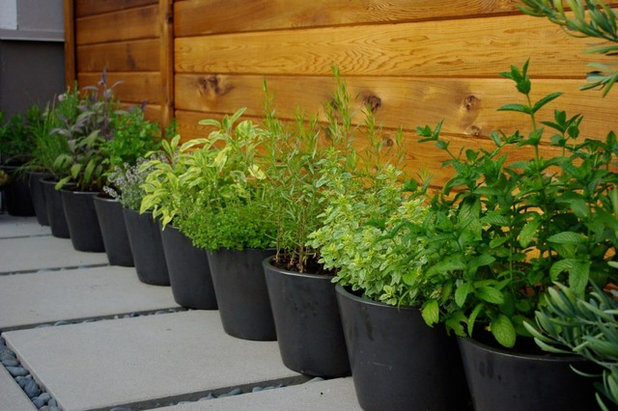
Aloe Designs
5. Grow the slow alternative to fast food. Growing your own food and perhaps helping the environment don't always have to be on an allotment garden scale; even a few pots can suffice. You can get a worthwhile crop by building smaller, more manageable growing spaces for seasonable crops.
"Cut and come again" salad plants, including rocket, lettuce, radicchio and endive, are perfect to grow in pots and are almost maintenance free. Growing tomatoes, such as Tumbler or Tumbling Tom, in a hanging basket is the essence of vegetable Slow Gardening.
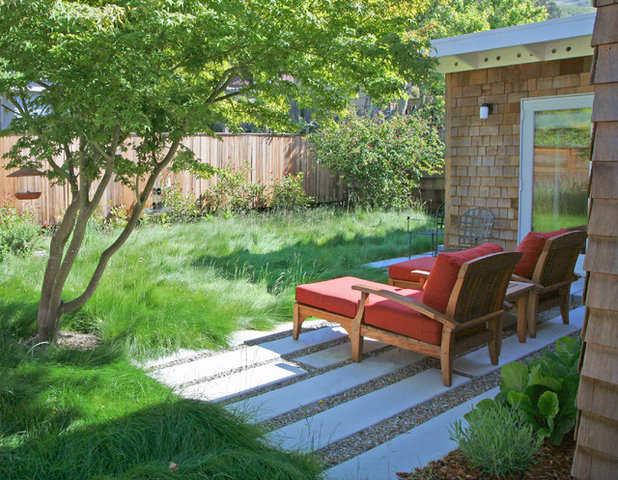
Shades Of Green Landscape Architecture
6. Leave the mower in the shed. A beautiful close-cropped emerald green lawn has been a central feature of many traditional gardens in the past (now replicated in contemporary gardens with the use of plastic artificial grass).
Creating the perfect lawn takes a lot of time, energy, fertilizer and water — all things that go against Slow Gardening principles. Leaving your grass to grow longer or including longer grass as part of your garden design will give you the benefits of saving on all these things while creating an environment for beneficial insects that will help with pollination around the garden.
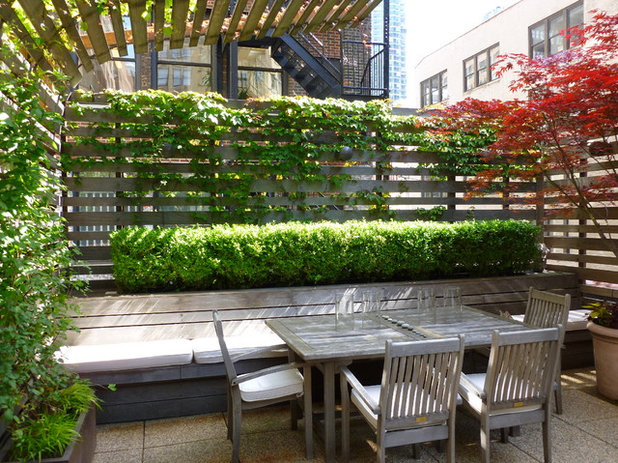
Lynn Gaffney Architect, PLLC
7. Create a natural home for your garden's wildlife. Slow-growing hedges, especially native varieties, will give even the smallest garden the benefits of providing shelter and food for birds and insects. The last thing a Slow Gardener needs in the garden is topiary or a fast-growing hedge that needs a lot of time-consuming clipping and care.
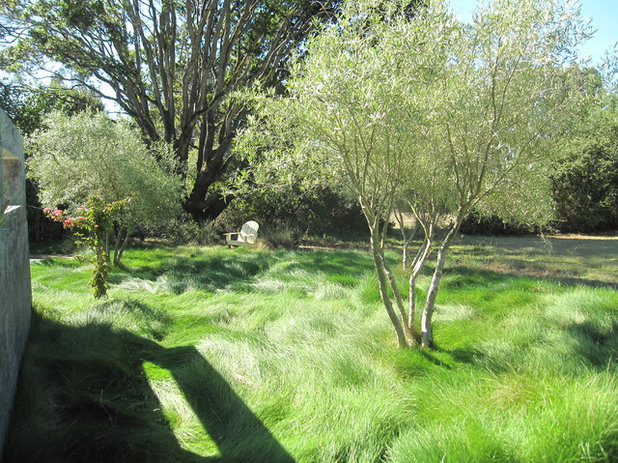
Kathleen Shaeffer Design, Exterior Spaces
Maybe this is your image of slow gardening — a quiet place where you can sit in the sun without a care about the uncut lawn or flowers to deadhead.
Above all there are no hard rules to Slow Gardening. Your garden should suit your lifestyle and environment, and allow you to relax, take your time and follow the seasonal rhythms. So, perhaps the hippies had the right idea in the first place.





